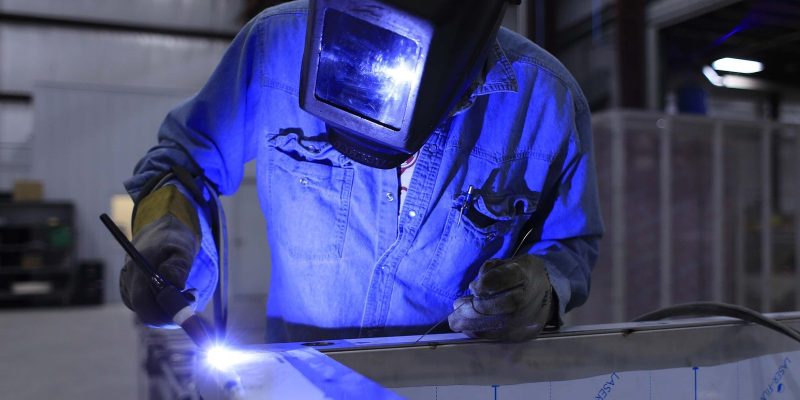There are several aluminum welding shop procedures available, however no one welding process is appropriate for all purposes. To select which process is ideal for your needs and applications, you must assess your welding skills, the fundamental processes offered, and the capabilities and advantages of each. You may then decide which welder is ideal for you.
A summary of welding procedures
MIG, TIG, and stick are the most often used procedures. For certain uses, each offers advantages and disadvantages. There is no one-size-fits-all solution.
MIG/GMAW — MIG welders employ a wire welding electrode on a spool that is automatically supplied at a constant pre-selected pace. An electrical current between the base metal and the wire creates an arc, which melts the wire and attaches it to the base, resulting in a high-strength weld with a fantastic look and no need for cleaning.
TIG/Gas Tungsten Arc Welding (GTAW) – This arc welding technology produces welds with a non-consumable tungsten electrode. Shielding gas (typically argon) and filler metal protect the weld region from ambient contamination, while certain welding, known as autogenously welds, do not require it.
Stick/Shielded Metal Arc Welding (SMAW) — for many years, stick welding was the most prevalent method for most shop welding. An electric current flows from a gap between the metal and the arc-welding electrode in this procedure.
What procedure best meets your requirements?
Determine the sorts of aluminum welding shop tasks and materials you will be working on the majority of the time. Do you make metal sculptures? Are you planning on restoring an ancient muscle vehicle in your garage?
Is it necessary to modify the motorcycle you purchased years ago? Perhaps you require basic agricultural equipment maintenance.
Taking the effort to identify the tasks that will consume the most of your welding activity will help you establish the precise metal thickness you will most likely weld most frequently — and, eventually, will help you pick the best welder.
It’s time to be a little more precise. Let’s look at the welding processes available for each metal type.
What considerations should you think about while purchasing a welder?
The sort of welder you choose should be appropriate for the functions you demand as well as the tasks you will be working on the most. Consider your final aim and chances to increase the utility of your welder.
Will you require additional power or amperage in the future? Will you ever wish to learn or apply other welding techniques?
Don’t feel pressed to make a purchase choice. Spend some time defining your requirements. Miller can answer any questions you have regarding welding techniques, advantages, restrictions, and machine operation if you have any.
When you’re ready to match a specific model with a chore, hobby, or company, Miller can recommend the perfect model or product for you.
Miller service professionals’ top questions to ask
What amperage do I require for welding?
The quantity of electricity flowing is measured by amperage, which is the same as current, which is the heat.
As a rule of thumb, each.001 inch of material thickness takes one amp of output, thus welding a.125-inch-thick base material requires 125 amps, while welding a.250-inch-thick (1/4-inch) material requires 250 amps.
What exactly is duty cycle in welding?
The duty cycle of a welding power source is the number of minutes it can work continuously in a 10-minute period before overheating. As a result, a machine with a 40% duty cycle can run for four minutes and then must rest for six minutes.
How much duty cycle do I want from a welder?
The duty cycle rating you require in a welding power source is determined by the sort of task you will be doing the most frequently. A machine with a lower duty cycle rating will normally handle the majority of jobs in a shop or garage.
The operator is most likely welding at lower amps and halting more frequently to allow the machine to cool down.
What is the best welder for aluminium welding in a shop?
When selecting a welder for your aluminum welding shop, consider your amperage requirements as well as the available electricity.
While you may not want the most powerful equipment available, bear in mind that you may encounter welding tasks in the future that demand more amperage or power, or you may desire to weld aluminium.
Conclusion
Purchasing a suitable welding machine necessitates thorough study and preparation. Always think about the material you’re welding, the process, and the thickness of the material first.
View the working environment, electricity condition, and gas cylinder as well. Get a machine with an appropriate duty cycle for optimum welding outcomes.









Comments